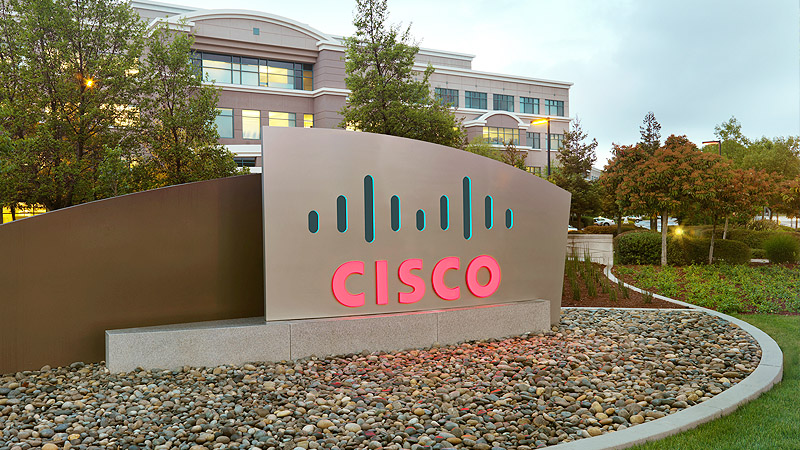Brussels, Belgium – October 11, 2012 – As the use of video calling continues to increase, 81 per cent of European consumers see it as personally important for them that these communications technologies work together – or "interoperate" – according to a newly-released survey.
In a clear signal to industry, 86 per cent – 70 per cent strongly - want companies to agree to a common standard so that software and devices – including popular video calling programs like Skype, Facetime, and Google Chat – are able to communicate with one another. Unfortunately, that is still not the case in video calling, as opposed to speaking on the phone or exchanging emails, where interoperability has since long been the norm.
European consumers appear to have a very healthy appetite for video-to-video communications. In a survey of 1873 consumers, conducted on behalf of Cisco, nearly 40 per cent of those who use video calling said they will use video technology more often in the next twelve months, whereas only 4 per cent expect to use video calling less.
Not unsurprisingly, what particularly attracts consumers to video calling is that it allows them to talk face-to-face to friends and family across the world. However, consumers are just as enthusiastic – and sometimes even more – about possible applications of video calling technology to other areas, such as health, education, and in the work place.
Of those surveyed, 80 per cent see video calling as an important way for patients in distant rural areas to talk face-to-face to medical specialists in cities without travelling, while 69 per cent believe the technology has an important role in enabling teachers and other educators to hold live lectures and classes by video calling and to interact with students in real time.
However, consumers are even clearer in pointing out that they want multiple devices or programs made by different companies to be able to communicate with one another – a feature know as interoperability. Of those surveyed, 81 per cent state -- 35 per cent extremely so - indicate such communication to be extremely important to their use of video, an unambiguous indication that consumers have little tolerance for potential glitches caused by a lack of interoperability. Given in the size of its market share in particular, 78 per cent of consumers feel Microsoft should open its Skype video technology. 72 per cent deem Microsoft's decision not to make Skype interoperable to be unfair to consumers.
These results dovetail with the results of a similar survey among likely voters held in the Unites States.
Key Highlights of Survey
- 85 per cent of respondents want companies to agree to a common standard for video calling so programs work together
- 84 per cent believe that video calling should be as easy as making a phone call
- 79 per cent want Skype to be interoperable with other video technologies
- This survey was conducted by Purple Strategies and based on 1873 telephone interviews
Background
The use of video by consumers, government and business is growing at a staggering rate. According to the Cisco Visual Networking Index, in just three years, one million video minutes (the equivalent of 674 days) will traverse the Internet every second. Use of video calling services is also increasing. For instance, on February 27th of this year, Skype reported that 34 million people were using the service at one time.
As video collaboration becomes increasingly mainstream, multiple vendors will have to work together to enable global scale and broad customer choice like consumers have today with phone, Internet and email. Currently, not all video calling technologies work together. Cisco TelePresence® and many other video communications products connect using the same standards-based "language." Unfortunately, one of the most popular consumer video calling services, Microsoft's Skype, relies on proprietary standards, which hinders Skype's more than 600 million users from calling non-Skype users, and prevents businesses from reaching them via systems that offer services such as health care and job training by remote video.
Cisco is a strong advocate of video communications using underlying technologies based on open standards agreed upon by credible standards bodies open to all interested industry participants, a framework that has been used successfully to create the standards that underlie the Internet, email and voice calling. With this approach, anyone who adopts an open standard is assured of basic interoperability that is not controlled by any single commercial vendor.
Supporting Quotes
Chris Dedicoat, President, Europe, Middle East, Africa, Russia, Cisco
"Video is the most engaging medium and its use in every aspect of our lives is growing exponentially. Consumers and business users alike today are demanding that video communications solutions work together and that making a video call be as easy as making a phone call. This is about freedom of choice, and we the technology industry must rally around open standards, as we did so effectively with telephone service, the Internet and email. Only with a truly open video community will we fully reap the economic and social benefits of this transformational technology."
Supporting Resources:
- Watch a video on why interoperability is important
- Share your support for an open video community
- Learn more about Cisco's vision for open standards in video
- Read a blog on standards-based interoperability
- View an infographic on business leaders' thoughts on in-person / video meetings
Methodology:
Purple Insights, a division of Purple Strategies, conducted this survey on behalf of Cisco. Purple conducted 1,873 interviews of consumers 18 years of age and older between September 10 and October 2, 2012 in the United Kingdom, France and Germany. The results were weighted so each country is proportionally represented to their overall share of the EU's population. The total Margin of Error (MoE) is +/- 2.3% for the combined EU results and higher for subgroups: 610 interviews in the United Kingdom (MoE +/- 4.0%); 611 interviews in France (MoE +/- 4.0%); 652 interviews in Germany (MoE +/- 3.8%).
Tags / Keywords:
Cisco, video, video calling, interoperability, industry standards, TelePresence, Skype
RSS Feed for Cisco: http://newsroom.cisco.com/rss-feeds
About Cisco
Cisco (NASDAQ: CSCO) is the worldwide leader in networking that transforms how people connect, communicate and collaborate. Information about Cisco can be found at http://www.cisco.com. For ongoing news, please go to http://newsroom.cisco.com.
# # #
Cisco and the Cisco logo are trademarks or registered trademarks of Cisco and/or its affiliates in the U.S. and other countries. A listing of Cisco's trademarks can be found at www.cisco.com/go/trademarks. Third-party trademarks mentioned are the property of their respective owners. The use of the word partner does not imply a partnership relationship between Cisco and any other company.


